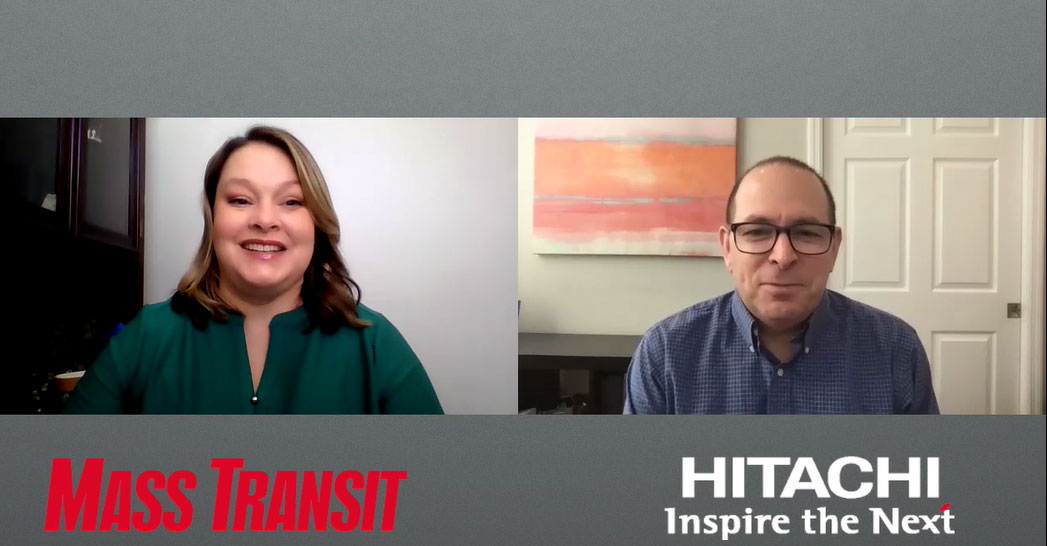The Global Health Crisis Is Accelerating Transportation’s Need for Digital Transformation


The transportation industry has reached an inflection point – one in which nearly all forms of travel have been met with unprecedented challenges. Transit and airport revenues have been decimated with the lack of passengers, while freight and shipping companies have been overwhelmed with demand from an explosion of e-commerce orders. Despite facing unprecedented challenges, the industry is facing an equally unprecedented opportunity to innovate.
As we look to build a better future, I’m excited to introduce our latest industry practice focused specifically on the transportation industry. Combining over a century of operational technology (OT) and half a century of IT expertise, we’re bringing together, for our customers, the very best solutions, which focus on solving real problems and improving our everyday lives in truly meaningful ways.
Air travel is down 73% since COVID began, costing airlines $4 billion per month in losses.[2a], [2b]
Annual US e-commerce sales increased over 44% in 2020 compared to 15% in 2019.[3]
As with many other industries, COVID-19 has greatly disrupted transportation. Public transportation ridership and commuting have drastically changed, international travel is largely restricted and even discouraged by many. Meanwhile, the industry is facing fundamental shifts due to innovations in technology. Demands for sustainability and the rise of electrification are reaching new heights, and autonomous vehicles are cruising the streets of cities like San Francisco, Paris, Tokyo and Dubai. In addition, testing for larger rollouts and new forms of rideshare and micromobility are pervasive across cities, worldwide. And that’s not even considering age-old challenges like transportation equity.
The good news is – help is on the way. In the United States for example, $1.9T of COVID relief funding is being made available, representing 20-25% of annual federal discretionary spending. In the past year, through multiple COVID response bills, we’ve already seen this spending increase by an extra $72 billion (including $39 billion for transit and $12 billion for airports), with additional spending projected in the next stimulus bill. This past summer, the EU also announced the largest green stimulus in history, earmarking more than $550 billion, spanning electric cars, renewable energy and agriculture, which represents a fundamental shift in spending priorities.
Looking to the future, digital health and safety solutions will be foundational to restoring passenger trust and confidence, providing a bridge to the smart transportation solutions that will solve longstanding challenges in the industry and make mobility more sustainable.
Even more promising, the technologies that support digital transformation have matured, moving from proofs of concept to proofs of value. Solutions like Smart Spaces and Lumada Video Insights are already solving real customer challenges in the world and proving the value they can provide, not just the technology itself.
Hitachi has helped a wide variety of transportation companies around the world to improve health and safety, operations and customer experience. A few of these projects include:
As I alluded to above, Hitachi has a long history of innovation and expertise in transportation. We delivered the first Shinkansen bullet train in Japan in 1964 and the first high-speed rail line in Europe in 1981. And we continue to manage over 250 kms of driverless metro rail systems across the world. Further, we pioneered the Autonomous Decentralized Transport Operation Control System (ATOS) to safely and efficiently manage 24 of Tokyo’s busiest metro area lines, covering 380 stations and 1,300 kms. In early 2021, we successfully tested the first battery-powered tram, which offers the benefit of requiring no overhead wires or other electrified infrastructure, saving on costs and visual impact.
As we continue that tradition, our beacon is to build a world where everything and everyone can seamlessly move where they need to go. To do that, we need to make transportation safer, smarter and more efficient with data-driven approaches to innovate in:
By leveraging the power of our people, technology and IP, as well as the capabilities of our extensive partner ecosystem, Hitachi Vantara is solving customer challenges with cutting-edge digital solutions and expert consulting services. Let’s get transportation back on track, keeping people healthy and safe, improving sustainability and delighting customers – but most of all building a better future together.
For more information on Hitachi Vantara’s transportation practice, visit: https://www.hitachivantara.com/en-us/solutions/industry-solutions/transportation.html
Mario Montag is Vice President, Transportation Practice at Hitachi Vantara.
 Check out the interview with Mischa Wanek-Libman from Mass Transit magazine and Mario Montag to learn more about how we’re helping the industry to recover and thrive.
Check out the interview with Mischa Wanek-Libman from Mass Transit magazine and Mario Montag to learn more about how we’re helping the industry to recover and thrive.
Mario Montag is Vice President, Transportation Practice at Hitachi Vantara.